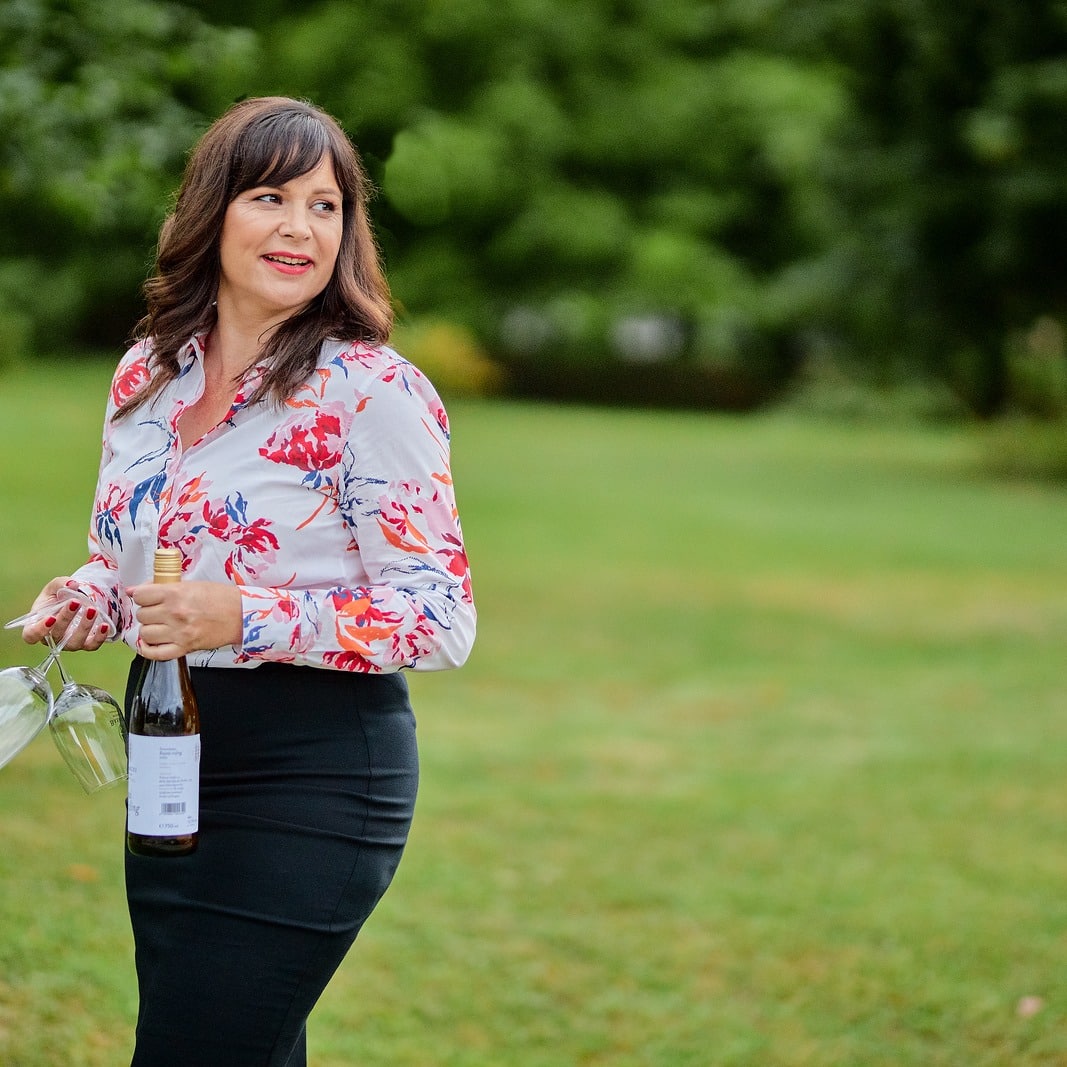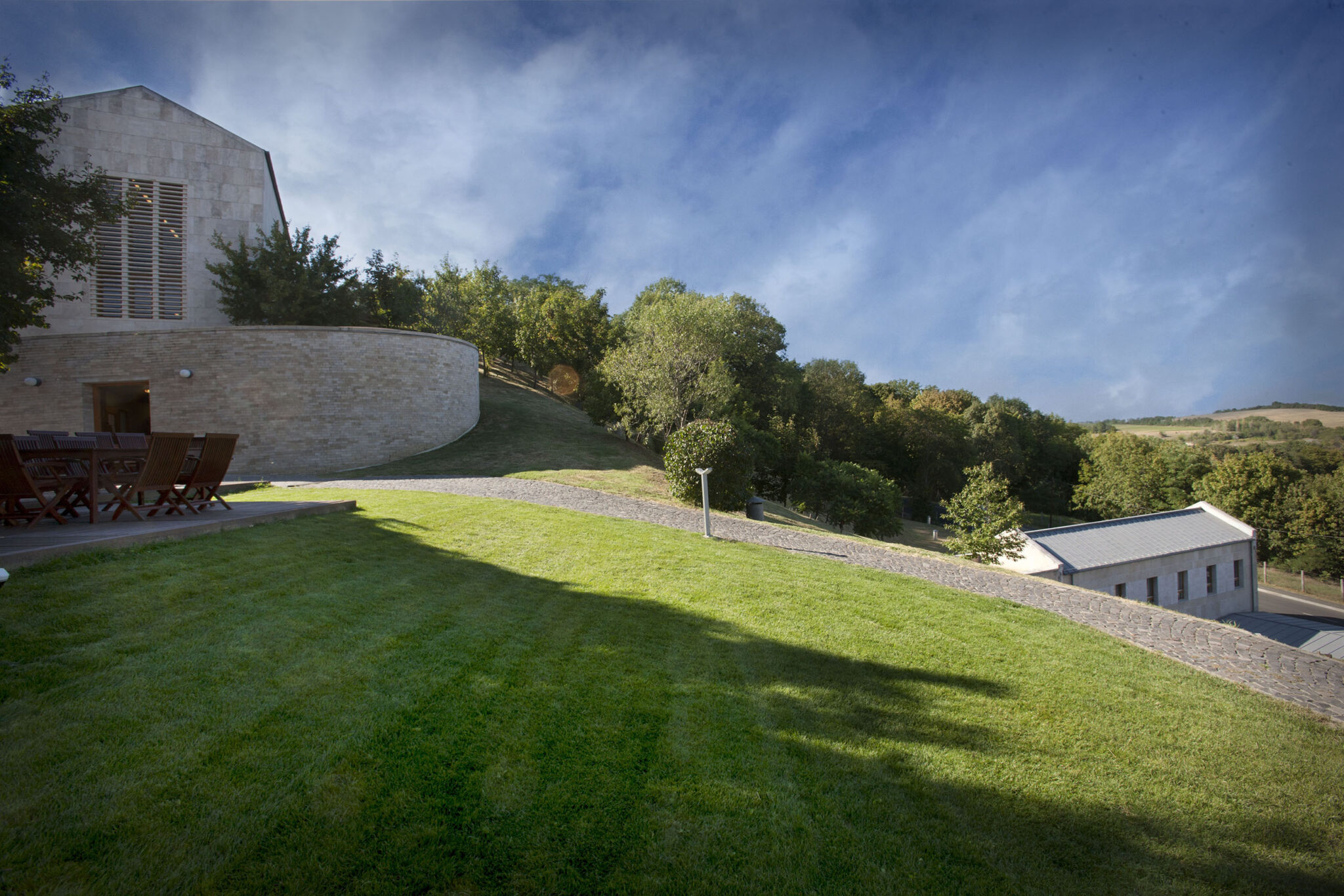
Pannonhalma Archabbey
1000 years at present
The Benedictine monks who settled on the Sacred Mount of Pannonia in 996 have always been closely connected with the viticulture introduced by the Romans. For centuries, they have applied the highest prevailing standards of wine growing and vinification. At the beginning of the 1900’s, the Abbey held about 100 hectares of vineyards in the direct vicinity of Pannonhalma, and it also owned plantations on the Somló Hill and in Tokaj. Its bottled wines, both white and red, were sold in Hungary as well as abroad far beyond the borders of what was then Greater Hungary.
The political and social upheaval that followed World War II put an end to the centuries-old tradition when the single-party state confiscated the Abbey’s vineyard holdings and winery. During the decades that followed, the monks never gave up hopes of reviving the legacy of excellence one day. Finally, 10 years after the collapse of Communist rule, plans for rebirth took shape. As a result, a new winery with a floor space of 2000 m² and a storage capacity of 3000 hectolitres was established in 2003. The Pannonhalma Archabbey, since 1996 part of UNESCO World Heritage, is the majority owner, in partnership with the MBH Bank.
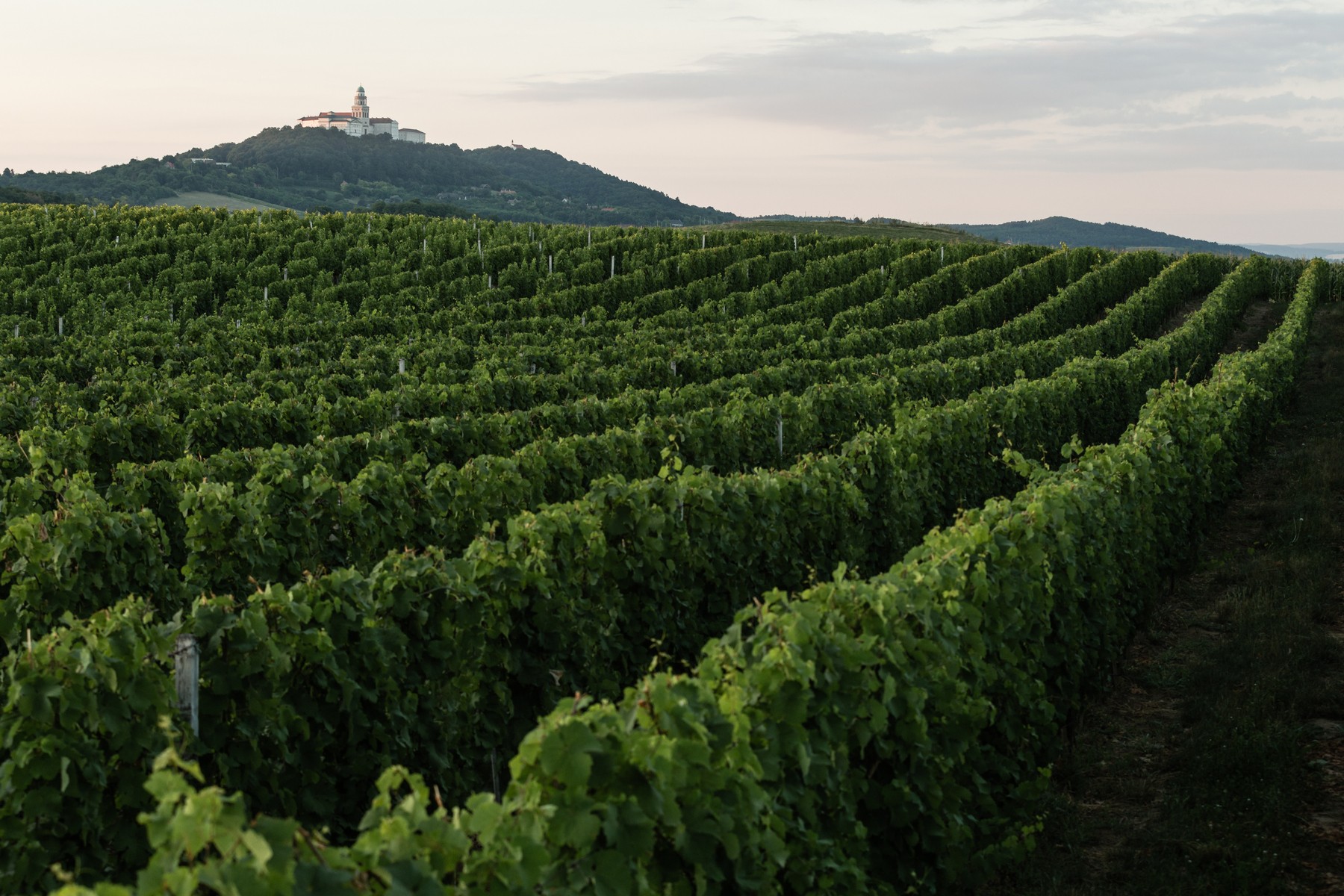
Historic vineyards replanted
The vineyards of the Pannonhalma Archabbey are situated in the officially designated wine region of Pannonhalma which, with a total area of about 600 hectares, is one of the smallest of the 22 historic wine regions of Hungary. The weather conditions are balanced with average sunshine hours and heat, and higher than average precipitation. Most of the vines are grown on brown forest soils that formed on loess and sand. Consistently from vineyard to vineyard and in all vertical intervals, the soils are alkaline owing to the presence of lime.
The winery cultivates about 50 hectares divided among four major vineyards, each of which used to belong to the Abbey in the historic past. The new vines planted under a program started in 2001 are spaced at a distance of 2.4 x 0.8 m; the training system is Guyot. The goal was to achieve a planting density of over 5000 vines per hectare in order to significantly cut the yield per wine to harvest much better quality fruit. In our choice of cultivation techniques, we strive to keep an optimal balance between modern mechanization and fastidious manual labour.
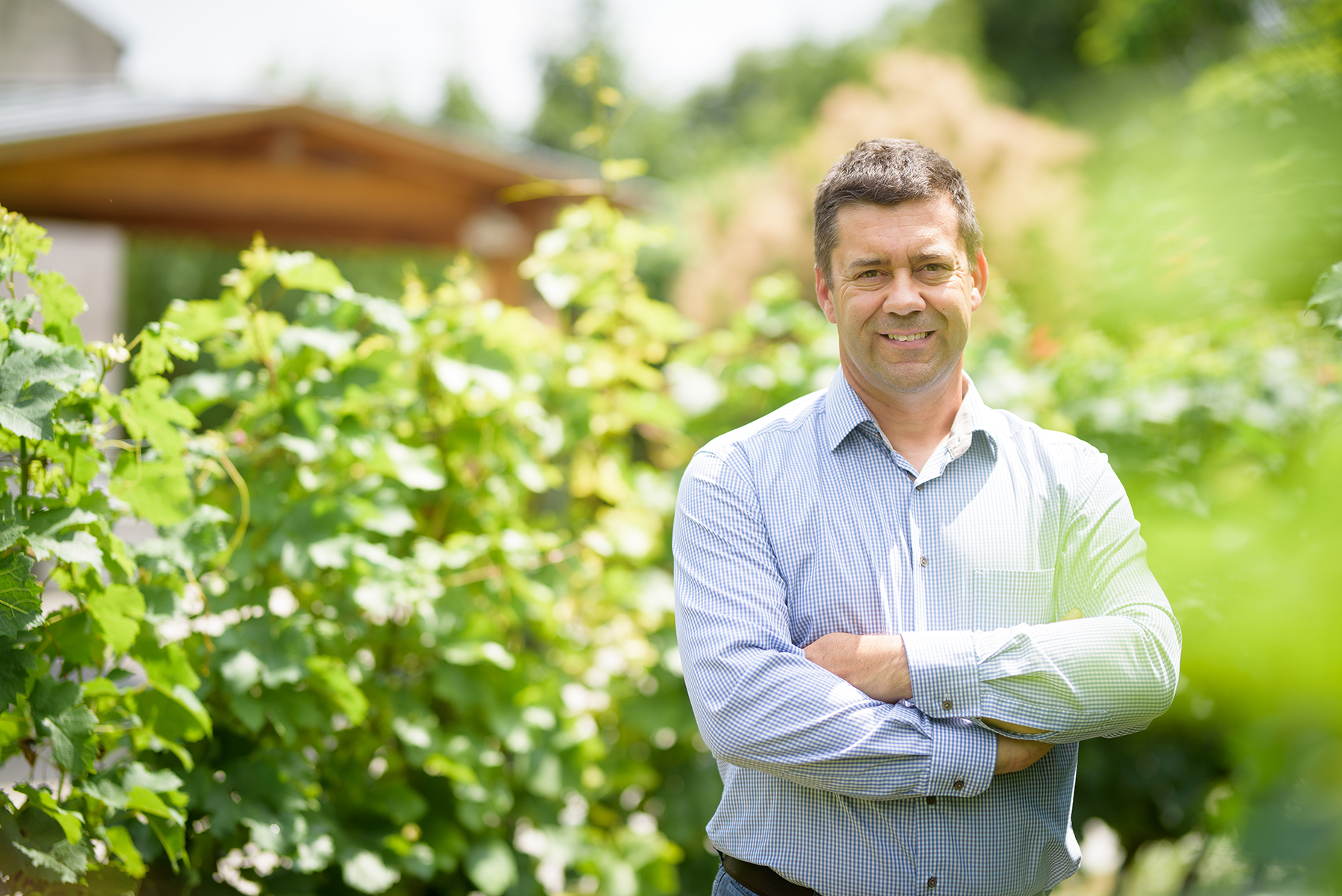
Grape varieties – indigenous locals and traditional internationals
Since the natural conditions of Pannonhalma closely resemble those of the upper Loire Valley and Alsace, two-thirds of our vineyards are planted by grape varieties that make crisp, easy-drinking white wines of fine quality. This is the style of wine we seek to produce mainly from Rheinriesling, Sauvignon Blanc, and Gewürztraminer.
In designing the composition of our vineyards, we have made it a point to uphold local and historic traditions by making room for Welshriesling, a native Hungarian variety as well as for Királyleányka, originally from Transylvania, the historic part of Hungary.
With visitors arriving from all corners of the world, we devoted one third of our acreage to popular international varieties that have shown good promise for the long term, such as Chardonnay, Pinot Blanc, Pinot Noir, Merlot, and Cabernet Franc. Among the red grapes, we give a prominent role to Pinot Noir as being ideally suited to the local climate and soils, and therefore uniquely capable of expressing the potential of Pannonhalma as a red wine producing district.
Discover the estate and the wines
As a winery open to visitors, our facility is optimally equipped to afford a glimpse of the winemaker’s work and more than a taste of our wines. Taking a professionally guided tour, visitors can familiarize themselves with the history of Benedictine viticulture, view the building complex, follow through winemaking processes, and taste the wines in a tasting room furnished in the classic cellar wing, which seats nearly 50 people comfortably.
Our Tasting Terrace, open daily weather permitting from the beginning of May to the end of August, and on weekends in September, commands magnificent views of the monastery’s lavender fields and vistas far into the east. As a supplement to our wine-related attractions, we also host periodic jazz and folk music concerts and other cultural events for a truly unforgettable visit.
In accordance with the natural conditions and the grape varieties used, our assortment includes fresh, fragrant, fruity white and rosé wines made by reductive technology, as well as full-bodied white and spicy, characterful red wines aged traditionally in wood.
Without exception, our pure varietal wines are powerfully marked by the terroir. This gives them a specific fascination among the world’s wines made from international varieties. We are also proud to offer a selection of distinctive blends that faithfully reflect the personality and spirit of our winery.
Contact
Tamás Illés
Marketing & sales manager
Pannonhalma Archabbey Winery
9090 Pannonhalma, Vár 1., Hungary
Tel.: +36/30/742-7303
E-mail: itx@osb.hu
Web: www.apatsagipinceszet.hu
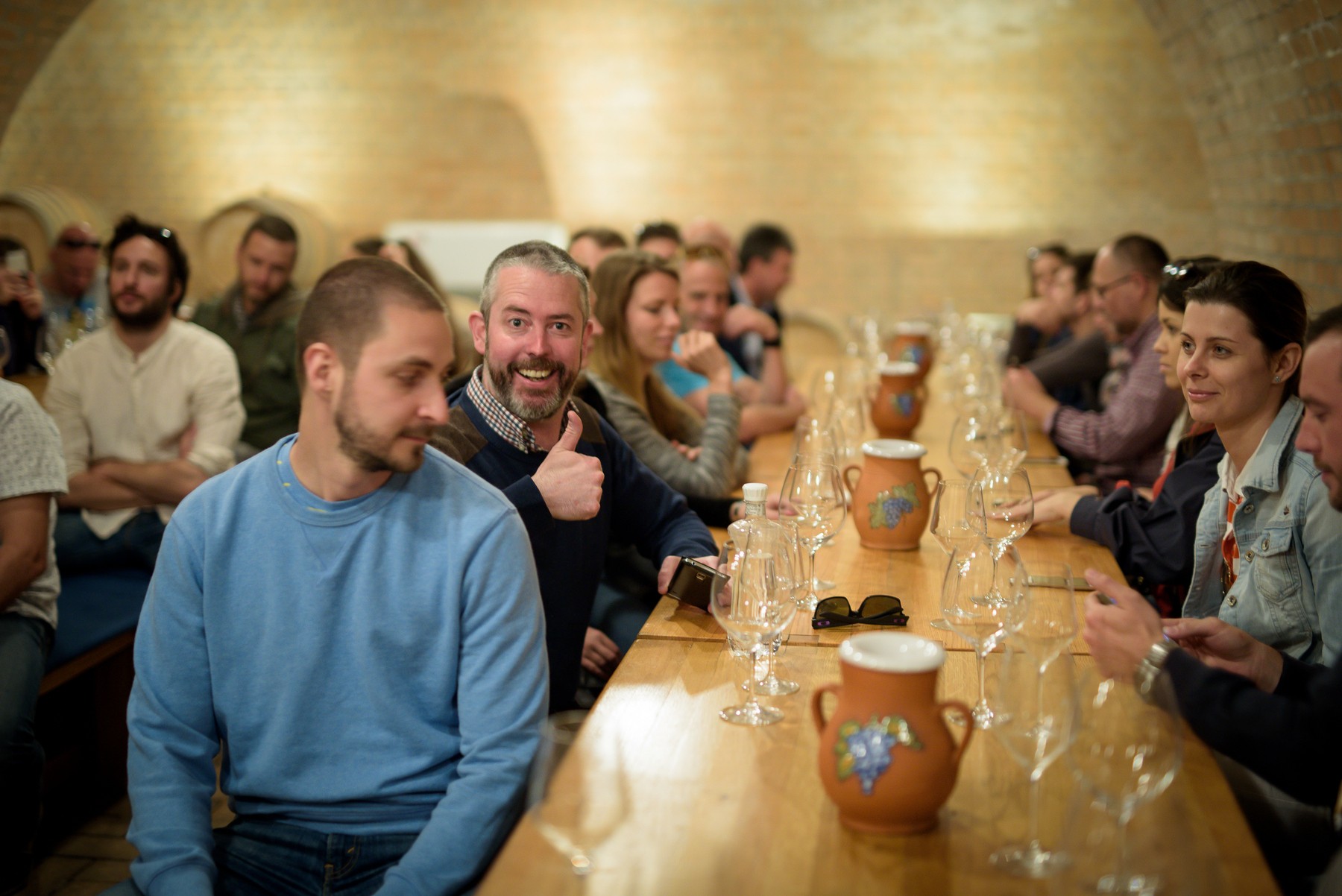
Wines

TRICOLLIS 2022
This fresh rosé is coming from a hot vintage. Its smooth and fruity notes are derived from the Merlot–Cabernet grapes, while its essential crispness is guaranteed by Pinot Noir and Kékfrankos. This wine is a clear and vibrant freshener with a wide scale of aromas and a long finish due to the ripe grapes.

PANNONHALMI TRICOLLIS 2022
Due to its strict technological processing, this wine delivers the fresh and crispy flavours of early summer fruits with its floral and pleasant aromas during its first months after bottling while exhibits the deeper character of the Riesling varieties for the following months and years.

PANNONHALMI HEMINA 2021
Hemina is the Burgundian style white wine of our winery that is composed of grape varieties according to the conditions of each vintage. The wine of the recent vintage is based on Chardonnay and Pinot Blanc that ensure the full body and the creamy structure, ornamented with the calcareous minerality and the delicate notes from the aging in used barrels and enriched by the lively fruitiness of Viognier and the vivid acidity of Sauvignon blanc. It is a complex and rich wine that can even develop with bottle ageing.

PANNONHALMI SAUVIGNON BLANC 2022
The crop of the two vineyards Széldomb and Tavaszó that bear diverse soil and microclimatic characteristic was harvested in different phase of biological ripeness. Due to the timely and carefully applied technology in the winery, a tasty and crispy white wine with the typical notes of the grape variety was produced that, at the same time, authentically represents the natural conditions of Pannonhalma. The aromatics of the wine are dominated by hay, gooseberry and green apple, enriched by a sweet tinge of elderflower on the finish.
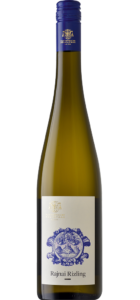
PANNONHALMI RAJNAI RIZLING 2021
Rhein Riesling is a really typical grape variety of the Pannonhalma wine region that also covers the biggest part of the vineyards of the Pannonhalma Archabbey. This wine is defined by the freshness with a dominance of mint leaves and a smooth touch of grape blossoms on the nose, while it is driven by citric aromas ranging from grapefruit to lime on the palate. The slightly full-bodied but still intense and fresh wine has high bottle ageing potential; at the present time, it is a lovely fresh summer wine with the true Riesling structure which will develop and guarantee its quality in the future. It shows the feature that made it one of the most well-known and popular grape varieties of the region.

PANNONHALMI PINOT NOIR 2021
Matching the styles of the old and the new worlds! Regarding Pinot Noir, we cultivate four Burgundian clones in three vineyards. The manifold soil and microclimatic facilities of the Pannonhalma wine region offer a unique potential to apply traditional technology combined with modern, new world approach. The wine is characterized by typical aromas of the variety on the nose. It reveals the full scale of red berries of the early summer from the ripe raspberry up to the black cherry. These notes are enriched by the spiciness coming from the aging in wooden barrels. On the palate plenty of ripe fruity aromas guarantee an unforgettable joy of drinking.

PANNONHALMI PRIOR 2021
A wine of uncommon purity, this flagship riesling selection is introduced by the citrus aromas that are very characteristic of the variety, embodied in Mediterranean notes of tangerine and ripe orange rather than the greenish tones that the variety often produces in northern growing locations. Crystalline and pristine, the wine relies on a broad rather than sharp acid foundation – a token for serious cellaring potential and the endurance of minty fruit flavours. The solid acid backbone attains a superb balance with a hint of residual sugar.

PANNONHALMI INFUSIO 2020
Infusio is the red wine of Pannonhalma in Bordeaux style. Made from Merlot and Cabernet Franc, the most prestigious blend of Pannonhalma Archabbey comes from the hottest vineyard. Ripe bramble and cranberry simultaneously appear on the nose, completed by the aroma of vanilla coming from the wooden barrels. The balance of extract sweetness, alcohol and mature tannins results in a mellow taste evoking the concentrated notes of dried sour-cherry and plum as well as coffee and chocolate. It is a serious and elegant wine with Mediterranean notes and a high aging potential. A wine truly devoted to festive occasions …



